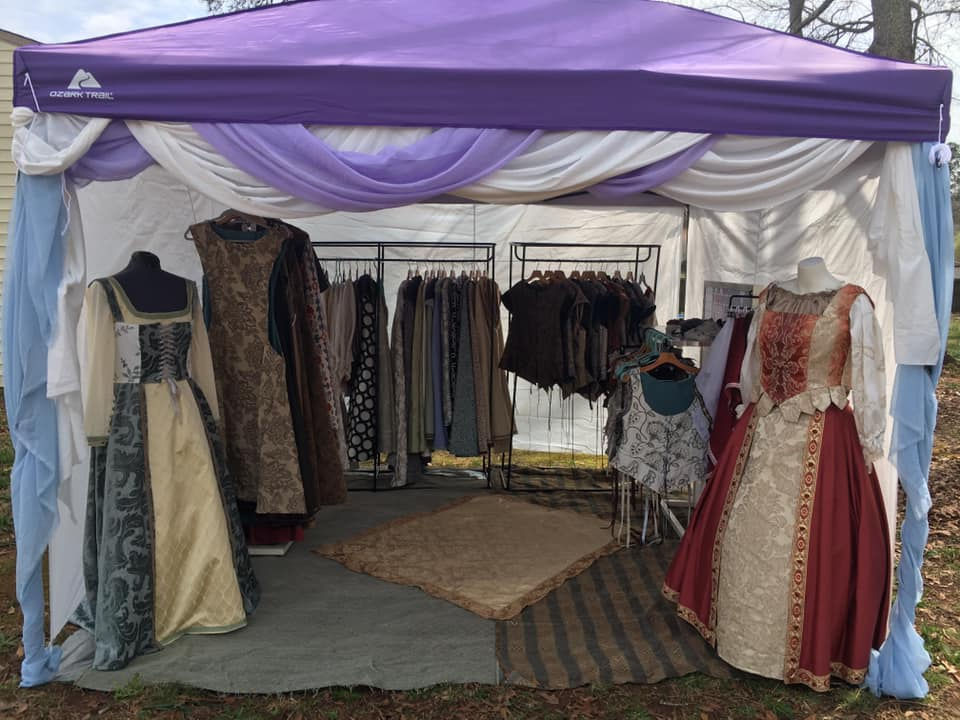Crafting Experiences: Focus Makes the Faire
- Amy Bright
- Sep 18, 2021
- 3 min read
In a previous post, I mentioned that Renaissance Faires are a brand and that Faire creators just need to live up to the brand.
The expectations that the brand sets up makes focus much easier than a broader "craft fair."
However, any event can create similar expectations to craft an experience that makes people return year after year.
1. Theme
Renaissance Faires have a major theme: the Medieval/Renaissance Eras. That's HUGE in terms of actual time frame, but specific enough to provide cohesion. Within that theme are sub-themes: Pirate weekend, Steampunk Weekend, etc., but the overarching concept holds to the clothing, hierarchy, weapons, etc. of the 800s-1600s.
The theme sets expectation for faire goers, but it also provides organizers with the ability to establish criteria for all aspects of the faire from year to year so attendees can anticipate their experience and grow within the concept (stability and change, y'all).
Vendors
The thematic element helps organizers choose vendors that align with the concept. If you're
organizing a craft faire, then any leather vendor works. With a Renaissance Faire, a leather vendor that sells Medieval kidney pouches will be juried in before a more modern crafter.
The theme also gives makers a direction. For our first Faire, we accepted people who had some Renaissance looking pieces but asked them to create more. We watched on FB and IG as the artists discussed their journey in making pieces specifically for the Faire.
We also knew to look for chain maillers, sword makers, creators of tonics, and to refuse the work of talented artists who were completely outside the realm of the event (which was difficult but helped us make good use of limited space).
Performers
Ren Faires are about spectacle and music and hullabaloo!
One our first year-regrets was not having enough live music going at the opening of the faire. We had so many people entering, yet the place seemed far too quiet for the size of the event.
Eventually, we had a roving accordionist, harpist, and mandolin player interacting with the crowds.
We also brought in local sword fighters from the HEMA (Historical European Martial Arts) and Buhurt camps, stilt walkers, belly dancers, Shakespearian acts, re-enactors, candle makers, forgers, and more (no fire performers this year, but we are working with the City on that)!
Despite the great variety, all fit within the theme--both the realistic and the fantastic elements of a Renaissance Faire.
A note on this: we chose to emphasize interactive, educational aspects of a Faire. Other places trend toward the fantastical. We also didn't demand a strict adherence to historical accuracy but let the performers choose their levels of what we think is accurate.
Aesthetic and the Audience
Renaissance have a fairly clear aesthetic that lends itself to clear costume choices AND

creative re-imaginings. I think this is what makes Ren Faires so attractive.
At most crafty festivals, markets, etc., the crowds are more spectators/consumers: we enter, shop, maybe listen to some music, and then we go home. Even if the vendors and music are amazing, we aren't important excepts as a source of income and numbers.
At a Renaissance Faire, we, the audience, create the atmosphere by dressing up, creating characters, and becoming part of the experience for others.
We go to people watch and BE watched!
The aesthetic and costuming give the vendors something to strive for as well: people worked hard on their tents and costumes. I've seen some of them at farmer's markets with the same items, but add fairy wings or a corset, and these vendors transformed into something eye-catching and more interesting to the buyers.
Through a clear theme and aesthetic that informed how we chose vendors, performers, and costuming, we crafted a Renaissance experience to remember!






Comments